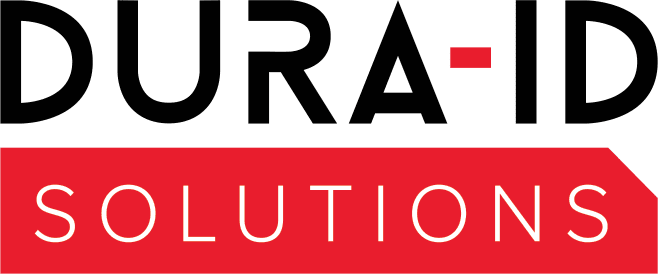Intermediate bulk containers (IBC) are industrial-grade containers that are used throughout the manufacturing and logistics world, designed specifically for the handling, transport, and storage of liquids, powders, pastes, or solids. It’s a pallet-mounted, reusable container that can be stacked and is moved by a pallet jack or forklift.
IBCs were first introduced in 1992 as an alternative to 200-litre drums, and since then, these containers have become the standard means of transportation and delivery for companies dealing in chemicals, pharmaceuticals, food ingredients, sand, powders, and other liquids.
At Dura-ID, the labelling solutions we provide for IBCs are typically A4 or A5 size to meet the GHS and CLP requirements for identifying hazardous products. They are engineered to withstand harsh storage conditions, ensuring all products achieve full section 3 BS5609 compliance to meet IMDG regulations for the clients we serve.
Storing and shipping
Most IBCs are specifically designed to be stacked onto pallets, and because they may be carrying potentially hazardous chemicals, it’s imperative that everything is labelled properly and the hoses are properly attached to prevent any leaking. Secondary containment areas are often incorporated into warehouse designs to allow for some run off, so each label needs to accurately record what’s inside to ensure storage best practices are followed.
What’s inside an IBC and the quantity of material will also determine how many IBCs can be stacked on top to follow safe storage guidelines. Generally speaking, IBCs are designed for stacking at least two containers high, but in some cases, may allow for up to four containers high. However, this is only acceptable when the vessels are empty and collapsed or have been specially designed for this purpose, as per the manufacturer’s instructions (which must be displayed on the label). The UN marking present will define the maximum weight for that vessel and the allowable weight upon stacking.
Tracking and identification
Maintaining a fleet of IBC containers represents many challenges, with one of the biggest being tracking the location of each vessel. To improve the chances of vessels being returned to material suppliers, many companies choose to rent out IBCs to their customers, which adds another logistical hurdle to overcome in the supply chain.
That’s why the labels we supply are fitted with a unique barcode. This ensures readability throughout the journey of each vessel, ensuring suppliers and customers can keep track of vessels and prevent the costly process of replacing them. Barcodes are scanned prior to shipment and can be tracked in the system, offering complete transparency about the number of IBCs in each location, whilst also guaranteeing large quantities of valuable materials can be easily identified.
NeuraLabel 550e
Here at Dura-ID, we supply innovative label solutions to clients across a range of different sectors – and the NeuraLabel 550e is one of those solutions. Using a GHS compliant roll-to-roll laser printer, this label empowers clients we partner with to print on-demand, in a variety of languages and offers complete in-house control of regulatory information.
Here are some of its key features:
- Full colour LED technology
- Large format labelling
- Print width of up to 8.5″
- Print speeds of up to 11 inches per second
- Prints on fan folded or roll-to-roll continuous label media
Industries we serve
Wherever large quantities of materials are transported, IBCs are more than likely used. They offer a convenient, safe and reliable way to move materials between manufacturing, warehouse, and end-user locations, and the labels we supply make this whole process run a lot smoother.
Here are some of the industries that we supply IBC label solutions to:
- Chemical manufacturing
- Recycling and waste management
- Construction
- Agriculture
- Food and beverage
- Pharmaceuticals and biotechnology
If you think Dura-ID Solutions and our robust IBC labels could be of use to you and your business, please reach out and we’ll give you a call. Simply fill out this form and one of our team will be in touch shortly.
